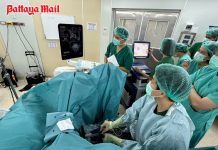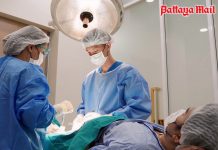Wouldn’t it be nice, if after you have been X-Rayed, you could get your “own” doctor back home to look at the X-Ray itself and not just the results? Think of the time this would save, as well as the postage stamps!
Requests such as I have written above are common, but unfortunately, the digital technology to allow this to happen is often lacking – but not at this end, I hasten to tell you.
But first, some history lessons. What has to be understood is that the X-Ray film cassette, as an instrument to record images, is basically the same, film or digital. It is a silver, light-tight box which allows a measured amount of light (as radiation) to fall on a sensitized plate inside it. Initially we exposed the image on to glass plates covered with silver chemicals, then we developed the film canister, and now we have CCD’s, (Charge Coupled Devices) which accept the different degrees of light and can record this to allow down-loading later. In other words, there is not much difference at all, other than one is “instant”, while the other requires messy developing and printing.
Where digital has also moved in, is in medical image technology. We are all conversant with the X-Ray film, where a sensitized plate (in a metal cassette) is placed under the patient, and is exposed to radiation which goes through the body and strikes the film in the cassette. From there, the X-Ray film was developed (just like a negative), dried and sent to the radiologist to be read. This takes a few minutes, and eventually the bulky X-Ray films are attached to the patient’s file, and eventually stored in a warehouse, along with millions of other X-Ray films.
That too is dead! Enter the PACS, otherwise known as the Picture Archiving and Communication System, part of the digital revolution in medical radiology technology. Like the old camera film, X-Ray films have been superseded by a digital way of recording the primary X-Ray image. The radiation remains the same, with the rays passing through the body, it is just the image capture in the cassette that is different.
Now, inside the cassette is a plate which is similar to the memory stick in your digital camera. To read the memory stick, it goes in a reader, which converts the information into a usable digital form. This is the same basic principle with the X-Ray cassette which contains a large ‘memory stick’ which goes into a reader and the image is then stored in digital form, rather than a sheet of film. There is also another method which exposes a digitized plate cassette which can be read directly into the image storage system, without the need for a reader as an intermediate stage.
This technology has been refined to cover images from various modalities, such as ultrasonography, magnetic resonance imaging (MRI), positron emission tomography (PET), computerized tomography (CT), mammography and radiography (plain X-rays).
This digital revolution has much to offer both doctors and patients as advantages over film. PACS replaces hard-copy based means of managing medical images, such as film archives. It expands on the possibilities of such conventional systems by providing capabilities of off-site viewing and reporting (distance education, tele-diagnosis). Additionally, it enables practitioners at various physical locations to peruse the same information simultaneously (teleradiology). With the decreasing price of digital storage, PACS systems provide a growing cost and space advantage over film archival. “The dusty old film library is dead,” said a radiologist in Australia whom I consulted when writing this article.
Nobody is mourning the death of film in the photographic world, and I believe that we should be the same in the medical world. By all means keep the memory of film alive, but let us as modern doctors move into today with an eye on tomorrow.
With digital technology, it is now possible for an X-Ray to be sent as an email to “your own” doctor – provided he or she is digitally equipped!
(With thanks to the radiologists at the Bangkok Hospital Pattaya who were kind enough to demonstrate the PACS system for me.)




